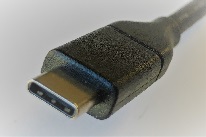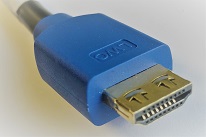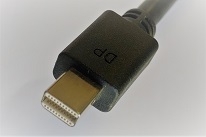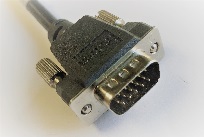We are continually updating the classroom equipment to provide a standard set of inputs, such as USB-C. While we attempt to provide the best set of connections possible, you are responsible for providing an adapter to make sure your device can connect to the system.
The connections shown here are USB-C, HDMI, Mini DisplayPort, and VGA.




3 Steps to connect
- Choose a connection that works with your device.
- Connect the cable at the instructor station to your device.
- Select the connection type as your presentation source on the touchscreen control panel.
Connection considerations
-
If you use an adapter to connect to a cable, be sure to select the name of the cable as your presentation source. For example, if you are using an adapter with the HDMI cable, be sure to choose “HDMI Laptop” as your source.
-
If you don’t hear audio, you may need to make a change in your device’s settings to send audio to the correct output. After connecting either the HDMI or USB-C cable, look in your system settings for audio output options.
-
If you use VGA, be sure to also connect the 3.5mm audio cable to play through the system, and make sure VGA is selected as the presentation source.
Availability in classrooms
There are several ways to determine if the classroom you are scheduled in has your preferred connection:
- Preview the room before your next class or event. The touchscreen interface will have a different button for each presentation source type.
- Use Room Search to view the equipment available in your room. Currently, Connection - HDMI, Connection - USB-C, and Connection - VGA, are listed as features of rooms that have those connections.
- Email us at classrm@umn.edu.
Which connection should I use?
While VGA is widely available, digital connections have the following:
- Better overall quality, which is especially useful for high-resolution images or video
- Only require a single cable for transmitting both audio and video (Make sure your device is sending audio over that connection).
- Require little or no user adjustments after connecting, as devices using HDMI, Mini DisplayPort, or USB-C typically sense other devices and automatically adjust to the proper resolution.
If you have questions, please contact the Classroom Support Hotline at 612-625-1086 or classrm@umn.edu.